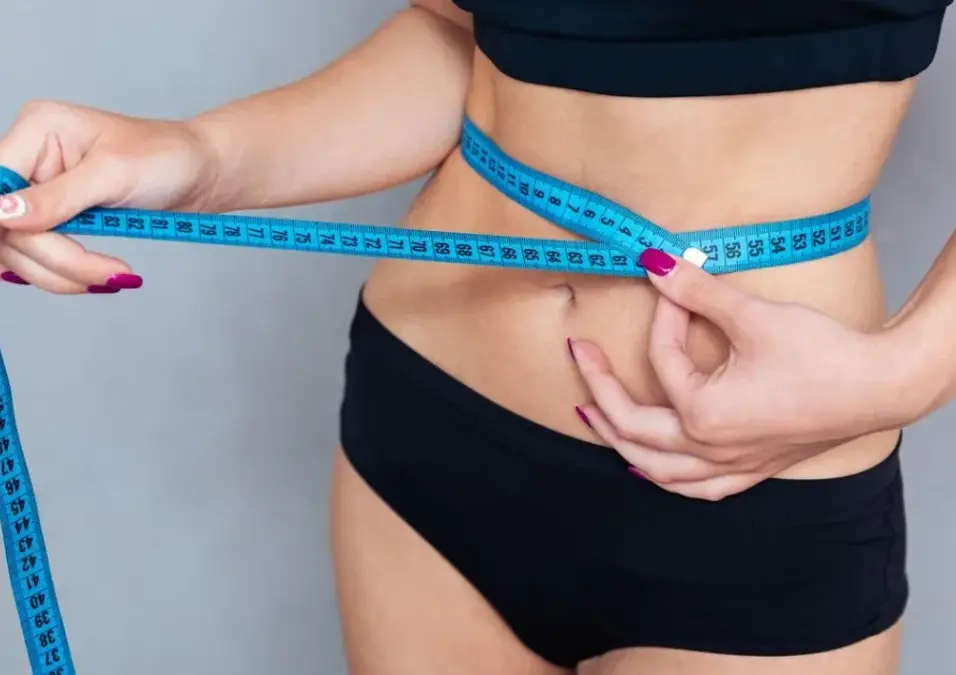Waist-to-Hip Ratio Women: Essential Health & Fitness Insights

SIGN UP FOR YOUR FREE DAY PASS TODAY!
Introduction to Body Shapes
When it comes to women’s health, body shape tells a story that weight alone can’t. The waist to hip ratio for women is one of the simplest ways to understand body fat distribution and its impact on health. Unlike body mass index (BMI), which only considers weight and height, the waist hip ratio shows where fat is stored on the waist or on the hips and that difference plays a major role in long-term wellbeing.
Want to check yours? Use our free Waist-to-Hip Ratio Calculator and see how your numbers compare.
The World Health Organisation (WHO) recognises waist-to-hip ratio as a stronger predictor of health risks than BMI or waist circumference alone. Two women may have the same BMI, yet their health outlooks can differ: one may carry more weight around the waist (“apple-shaped”), while another carries it around the hips and thighs (“pear-shaped”). Apple shapes are often linked to higher risks of type 2 diabetes, heart disease, metabolic syndrome, and other chronic conditions, while pear shapes are generally considered lower risk.
Check the Waist-to-Hip Ratio guide for Men
In other words, the waist-to-hip ratio women use to measure body shape is more than a number. It’s a practical health marker that highlights the balance between waist size, hip size, and overall fat distribution.
Measuring Waist and Hip Accurately
To get reliable results, you need accurate waist measurements and hip measurements. The WHO has clear guidelines:
-
Waist measurement: Use a tape measure and wrap it around your natural waist, which is the smallest circumference of your waist, located just above your belly button. This is typically just above your hip bone (the iliac crest — the bony ridge you can feel at the top of your pelvis). Make sure the tape measure is held parallel to the floor and is snug but not digging into your skin.
-
Hip measurement: Measure around the widest portion of your hips to determine your hip size, keeping the tape level and tape parallel to the floor.
-
Consistency matters: Always follow a standardised data gathering protocol—use the same tape, similar clothing, and measure at the same time of day to ensure accuracy and consistency.
GymNation tip: Don’t hold your breath or suck in while measuring. Be natural — accuracy beats ego here.
Calculating the Waist to Hip Ratio
Once you have your numbers, the formula is simple:
Waist divided by hip circumference = Waist-to-Hip Ratio (WHR)
Example:
-
Waist: 75 cm
-
Hips: 95 cm
-
75 ÷ 95 = 0.79 WHR
By using the waist divided by hip circumference, you can assess your body fat distribution. A higher WHR signals more fat stored around the abdomen, the type most strongly linked to heart disease, diabetes, and other metabolic disorders. For women, the World Health Organisation sets 0.85 as the cutoff for increased health risk.
On the flip side, a lower WHR usually reflects healthier fat distribution and reduced risk.
Skip the maths, use our WHR Calculator to check your ratio instantly and see where you stand.
Using a Waist to Hip Ratio Calculator
A waist-to-hip ratio calculator takes the stress out of the maths. Just enter your waist and hip measurements, and you’ll see your WHR instantly.
Benefits of using the calculator:
-
Quick & simple: No manual maths needed.
-
Track progress over time: Regular checks can show whether lifestyle changes are working.
-
Health awareness: Understand if you fall into the low, moderate, or high-risk category.
For best results, consult a healthcare professional to interpret your results and assess your health status. The calculator is a useful tool for assessing your overall health, but it should be used alongside other health indicators for a more complete evaluation. The calculator can also help you see how your waist appears in relation to your hips and track changes over time.
If the calculator indicates a high WHR, this often means you are carrying more weight around your waist, which is linked to increased health risks. You may benefit from a tailored meal plan, weight loss strategies, and increasing daily activity to burn more calories and lose weight.
Pair the WHR calculator with other GymNation tools like the Protein Calculator or FFMI Calculator to build a complete picture of your health and fitness.
Understanding the Waist to Hip Ratio
So, why does WHR matter so much? Because it shines a light on fat distribution, and abdominal fat is the type most strongly linked to health risks. In contrast, fat stored in the hips and thighs—known as peripheral fat—is generally less harmful than abdominal (central) fat. A high WHR is associated with an increased risk of myocardial infarction, heart attack, and high blood pressure.
For women:
-
Low risk: WHR 0.75 or below
-
Moderate risk: WHR 0.76–0.85
-
High risk: WHR 0.86+
Studies have even found that WHR plays a role in perceived attractiveness, with a 0.7 ratio often cited as “ideal.” WHR is considered a key factor in female attractiveness across cultures, reflecting evolutionary preferences for fertility and health.
Lower WHR is associated with higher fertility, while women with higher WHR tend to have significantly lower pregnancy rates. Additionally, some research suggests that fat distribution, especially hip fat, is linked to cognitive ability in offspring. But what really counts is health, not aesthetics.
Lifestyle Tips to Improve WHR
Improving your WHR isn’t about quick fixes but long-term habits that shift body composition.
-
Exercise smart: Combine cardio (which burns fat) with resistance training (which builds muscle). HIIT classes, functional training, and strength workouts at GymNation are ideal.
-
Nutrition matters: Focus on lean protein, fibre-rich carbs, and healthy fats. Food composition—what your diet is made of—can influence fat distribution and waist-to-hip ratio, so prioritise nutrient-dense foods. Avoid crash diets — sustainable changes deliver real results.
-
Reduce stress: High cortisol can increase belly fat storage. Yoga, Pilates, or even a good night’s sleep help balance it.
-
Stay consistent: Track your WHR every 2–3 months, not daily. Trends matter more than single measurements.
GymNation tip: Training consistently matters more than chasing perfection. Your WHR will improve as a by-product of healthier habits.
FAQs About Waist-to-Hip Ratio for Women
What is a good hip-to-waist ratio for women?
0.85 or lower is considered healthy by WHO, with 0.7 often cited as ideal in studies.
What is the most attractive WHR ratio?
Research often points to 0.7, but attractiveness is subjective. Focus on health first.
What is a 0.7 waist-to-hip ratio?
It’s a ratio that usually indicates low abdominal fat and a healthier distribution of body weight.
How to calculate WHR for females?
Measure waist ÷ hip, or use our free WHR Calculator.
Which waist-to-hip ratio is curvy?
Ratios closer to 0.7–0.75 often create a “curvier” appearance due to a smaller waist compared to hips.
Can exercise improve my hip-waist ratio?
Yes. Cardio reduces fat, while strength training builds the glutes and hips, balancing proportions.
What is the ideal waist size for a female?
There’s no single ideal, but many guidelines suggest keeping the waist under 80 cm for health.
Can diet affect my waist-hip ratio?
Absolutely. Reducing processed foods and focusing on balanced macros helps reduce abdominal fat.
Is the waist-hip ratio more important than BMI?
For health risk prediction, many experts argue yes. WHR gives a clearer picture of fat distribution.
What is the waist-to-hip ratio for obesity?
A WHR of 0.85 or higher in women suggests abdominal obesity and a higher health risk.
GET YOUR FREE TRIAL TODAY
































































































